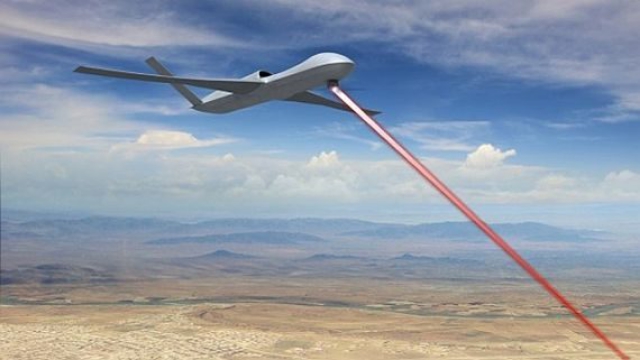Officials of the U.S. Missile Defense Agency (MDA) in Albuquerque, N.M., announced contract modifications Friday to General Atomics Electromagnetic Systems in San Diego, and to the Boeing Defense, Space & Security segment in Huntsville, Ala., to push forward with the Low Power Laser Demonstrator (LPLD) project.
LPLD seeks to develop enabling technologies in preparation for building a future high-energy laser weapon for a high-altitude UAV able to destroy enemy ballistic missiles in boost phase.
General Atomics Electromagnetic Systems on Friday won a $23.4 million contract extension, and Boeing won a $20.5 million extension for follow-on work to the first phase of the LPLD project.
In late 2017 General Atomics, Boeing, and the Lockheed Martin Corp. Space Systems segment in Sunnyvale, Calif., won LPLD phase-one contracts to build low-power laser prototypes to help establish beam stability at long range and the ability to dwell on one spot of a ballistic missile-sized target.
In LPLD phase one, the companies addressed laser power and aperture size by integrating and testing a low-power laser on a UAV.
Now General Atomics and Boeing move to the next step of the LPLD project, which is to complete their tailored concept design review for the LPLD post-preliminary design review risk reduction effort.
General Atomics Electromagnetic Systems specializes in high-voltage capacitors for direct current, pulsed power, high-frequency alternating current, and pulsed power systems powerful enough to support future railgun applications and all-electric aircraft carrier catapults.
The company also specializes in power-management and energy-storage technologies. Another segment of the company, General Atomics Aeronautical Systems in Poway, Calif., also designs UAVs such as the Predator, Reaper, Gray Eagle, and Avenger UAVs.
Boeing’s expertise in high-energy weapons include the company’s truck-mounted High Energy Laser Mobile Demonstrator (HEL MD) for use against air and ground targets. The company also developed the YAL-1 Airborne Laser Testbed, which was a megawatt-class chemical oxygen iodine laser (COIL) mounted inside a modified Boeing 747-400F jetliner.
The ability to destroy enemy ballistic missiles in boost phase is particularly important because with one shot it could destroy several independently targeted missile warheads, as well as decoys designed to foil missile defenses.
General Atomics and Boeing may move on to a technology demonstration in the LPLD program’s second phase.
In the yearlong first phase General Atomics and Boeing performed system design, and in the second phase will build, integrate, and test a functional low-power laser for beam control and stability. MDA officials anticipate a low-power flight test by 2020 and beam stability testing by 2021.
Lessons learned from the LPLD project are expected to help government and industry experts develop solid-state lasers strong enough to destroy enemy ballistic missiles in boost phase from UAVs operating at high altitudes.
The LPLD project’s low-power laser demonstrator should help military and defense industry experts understand how to use high-altitude UAVs to destroy missiles in boost phase with lasers, and ways to aim the laser, keep it steady on target, and focus the laser sufficiently to destroy the missile at it leaves the launch pad.
On this contract General Atomics will do the work in San Diego, while Boeing will do its work in Huntsville, Ala.; Huntington Beach, Calif.; and Albuquerque, N.M. Both companies should be finished by July 2019.
Source: Miltary Aerospace

